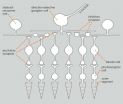(Press-News.org) Although thousands of people commit suicide worldwide each year, researchers and doctors do not have any method for evaluating a person's likelihood of thinking about or trying to commit suicide. An international group of scientists, in which the Hospital del Mar Research Institute (IMIM) has participated, has devised the first risk index in order to prevent suicides.
"It is of key importance to identify suicidal thoughts among people at increased risk. The most important contribution that our study has made is an international risk index to estimate the likelihood of a person moving on from these thoughts to any one of the following behaviours – planning or trying to commit suicide", Jordi Alonso, head of the IMIM Healthcare Services Research Group, tells SINC.
The data used in the study, which also involved Josep M. Haro, a researcher at the Sant Joan de Déu Healthcare Park, and which has been published in the Journal of Clinical Psychiatry, come from the World Health Organisation (WHO) survey World Mental Health Surveys between 2001 and 2007, in which 108,705 adults from 21 countries responded to the Composite International Diagnostic Interview.
The study looks at suicidal behaviour rather than suicides that result in death, since it is based on interviews carried out with adults. The factors associated with such behaviour are – being female, younger age groups, lower levels of education, not living with a partner, being unemployed, suffering from certain mental illnesses, having experienced troubles during childhood, and mental illnesses among parents.
We are all at the same risk
Suicidal behaviour rates are similar in both developed and developing countries. In addition, "all the risk factors are similar for both these sets of countries, so the index used to determine the risk of suicidal behaviour is valid in both cases", the expert explains.
However, in terms of mortality as a result of suicide, there are significant variations around the world. For example, countries in eastern Europe and the former Soviet Union have the highest rates (Lithuania, Belarus, the Russian Federation), and a large number of those who die from suicide suffer from mental illnesses.
Other decisive factors involved in suicides being enacted include religion (meaning there are very low suicide rates in Muslim countries), social support and access to weapons or lethal substances.
Below the average but on the rise
In Spain, a country with a traditional Catholic culture with extended families, a relatively low prevalence of mental illnesses and significant restrictions on the use of weapons, suicide rates are low, at half the European average.
"However, this rate is on the rise, while in countries with higher rates it is falling", the researcher warns. In places such as the United States, for every death from suicide there are between three and four hospitalisations resulting from failed suicide attempts, and between 15 and 20 emergency room visits for the same reason.
"Our index for evaluating multiple risks could help to predict suicidal planning and attempts with a fairly high level of precision and help medical specialists to foresee such behaviour", concludes Alonso.
INFORMATION:
Referencia bibliográfica:
Borges G, Nock MK, Haro Abad JM, Hwang I, Sampson NA, Alonso J, Andrade LH, Angermeyer MC, Beautrais A, Bromet E, Bruffaerts R, de Girolamo G, Florescu S, Gureje O, Hu C, Karam EG, Kovess-Masfety V, Lee S, Levinson D, Medina-Mora ME, Ormel J, Posada-Villa J, Sagar R, Tomov T, Uda H, Williams DR, Kessler RC. "Twelve-Month Prevalence of and Risk Factors for Suicide Attempts in the World Health Organization World Mental Health Surveys". Journal of Clinical Psychiatry 71 (12): 1617 – 1628, 2010.
First international index developed to predict suicidal behavior
2011-03-10
ELSE PRESS RELEASES FROM THIS DATE:
More reasons to be nice: It's less work for everyone
2011-03-10
A polite act shows respect. But a new study of a common etiquette—holding a door for someone—suggests that courtesy may have a more practical, though unconscious, shared motivation: to reduce the work for those involved. The research, by Joseph P. Santamaria and David A. Rosenbaum of Pennsylvania State University, is the first to combine two fields of study ordinarily considered unrelated: altruism and motor control. It is to be published in a forthcoming issue of Psychological Science, a journal of the Association for Psychological Science.
"The way etiquette has been ...
Rutgers researchers identify materials that may deliver more 'bounce'
2011-03-10
NEW BRUNSWICK, N.J. – Rutgers researchers have identified a class of high-strength metal alloys that show potential to make springs, sensors and switches smaller and more responsive.
The alloys could be used in springier blood vessel stents, sensitive microphones, powerful loudspeakers, and components that boost the performance of medical imaging equipment, security systems and clean-burning gasoline and diesel engines.
While these nanostructured metal alloys are not new – they are used in turbine blades and other parts demanding strength under extreme conditions – ...
When leukemia returns, gene that mediates response to key drug often mutated
2011-03-10
(MEMPHIS, Tenn. – March 9, 2011) Despite dramatically improved survival rates for childhood acute lymphoblastic leukemia (ALL), relapse remains a leading cause of death from the disease. Work led by St. Jude Children's Research Hospital investigators identified mutations in a gene named CREBBP that may help the cancer resist steroid treatment and fuel ALL's return.
CREBBP plays an important role in normal blood cell development, helping to switch other genes on and off. In this study, researchers found that 18.3 percent of the 71 relapsed-ALL patients carried alterations ...
Gene variant influences chronic kidney disease risk
2011-03-10
A team of researchers from the United States and Europe has identified a single genetic mutation in the CUBN gene that is associated with albuminuria both with and without diabetes. Albuminuria is a condition caused by the leaking of the protein albumin into the urine, which is an indication of kidney disease.
The research team, known as the CKDGen Consortium, examined data from several genome-wide association studies to identify missense variant (I2984V) in the CUBN gene. The association between the CUBN variant and albuminuria was observed in 63,153 individuals with ...
New microscope decodes complex eye circuitry
2011-03-10
VIDEO:
Ganglion cells preferentially form synapses with those amacrine cells whose dendrites run in the direction opposite -- seen from the ganglion cell - to the preferred direction of motion (amacrine...
Click here for more information.
The sensory cells in the retina of the mammalian eye convert light stimuli into electrical signals and transmit them via downstream interneurons to the retinal ganglion cells which, in turn, forward them to the brain. The interneurons ...
Physicists measure current-induced torque in nonvolatile magnetic memory devices
2011-03-10
ITHACA, N.Y. - Tomorrow's nonvolatile memory devices – computer memory that can retain stored information even when not powered – will profoundly change electronics, and Cornell University researchers have discovered a new way of measuring and optimizing their performance.
Using a very fast oscilloscope, researchers led by Dan Ralph, the Horace White Professor of Physics, and Robert Buhrman, the J.E. Sweet Professor of Applied and Engineering Physics, have figured out how to quantify the strength of current-induced torques used to write information in memory devices ...
NASA and other satellites keeping busy with this week's severe weather
2011-03-10
Satellites have been busy this week covering severe weather across the U.S. Today, the GOES-13 satellite and NASA's Aqua satellite captured an image of the huge stretch of clouds associated with a huge and soggy cold front as it continues its slow march eastward. Earlier this week, NASA's Tropical Rainfall Measuring Mission satellite captured images of severe weather that generated tornadoes over Louisiana.
Today the eastern third of the U.S. is being buffered by a large storm that stretches from southeastern Minnesota east to Wisconsin and Michigan, then south through ...
International panel revises 'McDonald Criteria' for diagnosing multiple sclerosis
2011-03-10
International Panel Revises "McDonald Criteria" for Diagnosing MS -- Use of new data should speed diagnosis -- Publication coincides with MS Awareness Week
An international panel has revised and simplified the "McDonald Criteria" commonly used to diagnose multiple sclerosis, incorporating new data that should speed the diagnosis without compromising accuracy. The International Panel on Diagnosis of MS, organized and supported by the National MS Society and the European Committee for Treatment and Research in Multiple Sclerosis, was chaired by Chris H. Polman, MD, PhD ...
MIT scientists identify new H1N1 mutation that could allow virus to spread more easily
2011-03-10
CAMBRIDGE, Mass. -- In the fall of 1917, a new strain of influenza swirled around the globe. At first, it resembled a typical flu epidemic: Most deaths occurred among the elderly, while younger people recovered quickly. However, in the summer of 1918, a deadlier version of the same virus began spreading, with disastrous consequence. In total, the pandemic killed at least 50 million people — about 3 percent of the world's population at the time.
That two-wave pattern is typical of pandemic flu viruses, which is why many scientists worry that the 2009 H1N1 ("swine") flu ...
New study proves the brain has 3 layers of working memory
2011-03-10
Researchers from Rice University and Georgia Institute of Technology have found support for the theory that the brain has three concentric layers of working memory where it stores readily available items. Memory researchers have long debated whether there are two or three layers and what the capacity and function of each layer is.
In a paper in the March issue of the Journal of Cognitive Psychology, researchers found that short-term memory is made up of three areas: a core focusing on one active item, a surrounding area holding at least three more active items, and a ...



